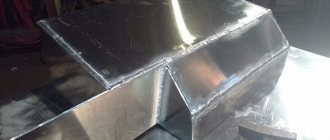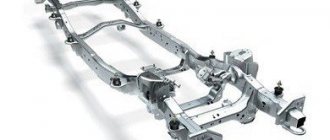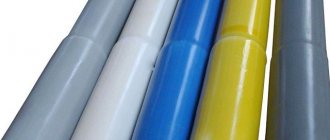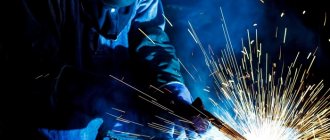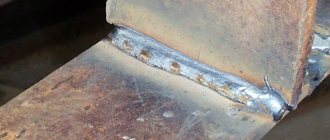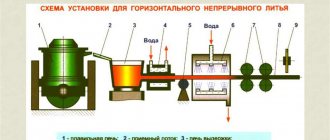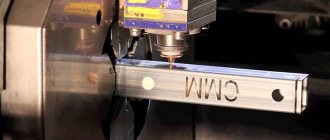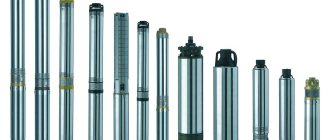When extracting oil from a particularly promising field, the flow well scheme is most often used: in this case, the oil is raised to the wellhead naturally (using reservoir energy). This mining method requires the least cost, both for the purchase and maintenance of equipment, and in time: since the lifting is carried out independently, you can save on pipes and special mechanisms. The design of a flowing well and the layout of the equipment are quite simple, so its construction is the most preferable, and in the future, when the pressure weakens, the well can be retrofitted to create an artificial lift.
Scheme of a fountain well
For this type of well, pipe strings are suspended on a reinforcement base, which is placed at the wellhead. The fittings play the role of a suspension, also performing the functions of sealing the mouth itself and controlling the operating mode of the entire well. Tubing pipes are a channel through which oil rises from the bottom to the surface. Depending on the length of the well, the length of the pipes reaches up to 3 km; the column can be assembled from several products fastened together in series. The length of an individual pipe varies up to 10 meters. The optimal connection method is using threaded couplings. It is undesirable to use welding for connection, since after the flow well diagram requires modification, the entire column will have to be removed to the surface. Lowering and lifting of column elements must be done using special equipment.
The main design element is the Xmas tree, which creates a durable structure of steel bars and locking mechanisms, and each element must be designed to withstand increased pressure. The weight of the finished structure reaches 1-2 centners. Most often, cross or triple fittings are used: the first type is more often used in oil fields, where there are no mechanical impurities.
Wellhead Christmas tree with flow lines
Purpose of the wellhead Xmas tree:
Purpose of fountain fittings
- Fastening tubing pipes, sealing the space between them and the casing.
- Direction of oil flow to flow lines.
- Carrying out operational activities.
The most common cross reinforcement is made of thick-walled steel crosses. It is smaller in height than a tee and is more convenient to maintain.
The fountain fittings include a pipe head and a fountain tree. The pipe head wraps around the riser pipe string and seals the annulus to the casing.
With the help of a fountain tree, the flow is directed into the flow line to the metering devices. On top of the tree there is a buffer, a three-way valve and a pressure gauge. A fitting (throttle) is installed on the flow line to change the oil flow by increasing or decreasing the flow area.
The fountain fittings have shut-off devices:
- straight-through valves;
- plug taps.
Equipment for fountain wells
Flowing wells can be equipped with equipment both at the bottom and at the mouth. If the rocks in the area of productive formations are of high strength, then open-hole technology can be used, when the column reaches the top of the formation, and opening is carried out at full capacity. In unstable rocks and a high risk of sand shedding, the bottomhole area should be strengthened with casing and the space outside it should be cemented. In this case, the influx of liquid is created by perforating along the lower edge of the pipe.
The flowing well design involves sealing the wellhead, which is done by installing a column head and a reinforcement structure equipped with a manifold. The creation of reinforcement is carried out according to the requirements of GOST 13846-89, and the design may differ in strength and type of structure. The basis is the head, or trim, and the fountain tree includes shut-off devices and elements for regulating the operation of the well. The head in the design is necessary for tying pipelines in the well, as well as for adjusting the direction and force of flow in the annular zone.
Structurally, the fittings for a fountain well allow you to measure pressure indicators on the upper segment of the tree, identify the temperature regime on the side branches of the tree and the head itself. According to the GOST standard, the design must include block elements and devices for protecting the structure, which, if necessary, can be activated from a distance. The fountain tree is an important part of the overall design, and it allows you to regulate the flow force in the pipeline itself and direct it into the production channel.
Equipment with a pair of tubing pipes, products of larger diameter are placed on the lower part using a threaded connection to an element that simultaneously serves to seal the space behind the pipes. If the well should not be stopped during operation, it makes sense to install a two-section tree, which ends at the top with a special buffer and a pressure gauge. When lowering into a functioning fountain well, these devices are replaced by a lubricator. Design types are selected based on the characteristics of the well and the characteristics of oil production in a particular field.
Construction of oil wells
Diagram of an oil well
Drilling is carried out using a drilling rig vertically to a depth of several kilometers. The cross section is usually round, with a diameter of up to 40 cm.
The walls are reinforced with metal casing pipes. Cement is pumped into the space between the casing and the walls, which hardens and separates the underlying layers, and also protects the casing from formation waters.
The fountain method of oil pumping involves the installation of the operating equipment listed below.
Flowing Well Study
The flowing well design requires regular studies, which are carried out using the method of test pumping of liquid and the method of restoring pressure in the bottom hole after the equipment is stopped. Specialists adjust the operating mode by changing fittings and installing elements with holes of different sizes. The test pumping method can be successfully used to identify the degree of productivity of a well and determine the optimal mode of its operation. As for the method of restoring the pressure level, it can be used to calculate the main characteristics of the formation.
Research using the trial pumping method has recently been carried out to construct indication lines based on the dependence of flow rates on changes in pressure. Also, work is necessary to calculate the productive coefficient, the content of impurities, including water, during different operating modes. Measurements are made using a pressure gauge, flow meter, and determine the size of the holes in the fitting. By replacing the main manifold, the specialist sets a new operating mode and measures pressure and flow rates, after which he finds out what the difference in results means.
The procedure for selecting liquid for research is carried out using special devices that are fixed and lowered like a pressure gauge. Lowering the pressure gauge itself requires a lubricator in the design, which will be equipped with an oil seal with a roller. The gland acts as a sealing agent for the hole through which the wire is passed. If it is necessary to carry out deep research, it is necessary to use a mechanical lifting winch, which is placed 20-30 meters from the mouth.
First, the template is lowered down, then the measuring device (sometimes with a weight). To prevent the wire from breaking during the study, the equipment must not be lowered below the edge of the pipe. To prevent this phenomenon, the shoe is equipped with a special pin that limits the descent inside the column. The lifting is carried out at low speed; in the last meters it should be minimal (in some cases, research devices are pulled out manually).
The flow rate is measured in group installations, and a tap is used for sampling, which takes a sample of the liquid and gives the result after some time.
Ball launch chamber
Oil production is complicated by the precipitation of paraffins in flow lines, the formation of sand plugs and other mechanical impurities.
One method of dewaxing is the use of rubber balls, which are located in the launch chamber mounted on the Xmas tree string. As the flow lines are waxed, the gate opens and a rubber ball is supplied from the chamber, which has a slightly larger diameter than the flow line.
It cleans the paraffin by moving the oil stream into the receiving chamber.
Launch and reception chamber diagram
Other oil extraction methods
During the exploitation of the field, the energy of the reservoir and the fountain decreases. In this case, they switch to mechanized methods of lifting oil:
- gas lift;
- pumping
Gas lift method
It is carried out by pumping gas into the well. If air is pumped in, the method is called airlift.
Gas is supplied by compressors from a gas lift station or from gas reservoirs under pressure (non-compressor method).
The gas lift method is preferable to the air lift method, since air can deteriorate the quality of the oil product due to its oxidation.
Advantages of the gas lift method:
- placement of equipment on the ground;
- absence of pumps with wear parts in the well;
- sampling a large volume of liquid from any depth;
- simple flow rate adjustment.
The disadvantage is increased corrosion of pipelines.
Pump method
It is used when the formation level is significantly reduced, when the gas-lift method becomes uneconomical.
Types of pumps:
Pumping method of oil production
- rod borehole plunger pump;
- rodless submersible centrifugal pump;
- screw pumps.
Rod pumps are most often used. They have a small diameter plunger that is lowered into the well below the liquid level. The drive of the installation is a pumping machine.
Screw pumps squeeze out liquid using a rotational method. The rotor has a screw shape of small diameter with a deep and very rare thread. It rotates inside a stationary stator. The engine is installed on the ground, rods are attached to it, which ensure the operation of the rotor.
It is possible to use submersible electric motors with a gearbox that ensures rotor rotation. Screw pumps are reliable, resistant to solid abrasive particles and economical. Their service life is longer than that of sucker rod pumps. Another advantage is that the initial financial costs are lower than with other methods of mechanization. The disadvantage is the inability to work with aggressive environments.
Rising pipe column
Using prepared equipment, raw materials are delivered to the surface of the earth. Columns are otherwise called pump-compressor columns.
Experts determine the diameter of pipes based on certain data:
- Oil pressure.
- Expected flow rate of raw materials (flow rate is the amount of extracted material per day, in cubic meters. The higher the expected flow rate, the larger the diameter)
- Depth of material.
Typically the diameter is 40.3–00.3 mm.
Other methods of extracting material
There are several other ways to obtain raw materials:
- gas lift;
- mechanized.
Each of them has certain pros and cons.
Gas lift method
This mining method is mechanized. It is relevant when there is not enough reservoir energy left to push oil to the surface. Then the lift is carried out by pumping compressed gas into the formation. You can pump in air or background gas from a nearby field.
To perform compression, it is necessary to use a high pressure compressor. Then the method will be called compressor.
If gas is supplied into the formation under pressure, the gas-lift method will be called non-compressor. The substance will come from a nearby deposit.
With this method, you do not need to start from scratch to carry out work in the field. It is necessary to supplement the equipment from the fountain installation. Certain compressed gas supply valves will be required. They are mounted at different depths.
The main advantages of gas lift compared to other mechanized mining methods:
- It is possible to obtain large quantities of material from different depths at different stages of well development at an adequate cost.
- It is realistic to continue working even if the hole is significantly distorted.
- Work is carried out with gas-contaminated and overheated formations.
- Full control of work.
- The equipment is efficient and reliable.
- You can use several layers at the same time.
- Maintenance and repairs are straightforward.
With a large number of advantages, there are also disadvantages - the high cost of metal-intensive devices.
In this regard, gas lift is used to lift light oil with a large gas component.
Main advantages of the method
The fountain mining method is used when new locations for the extraction of black gold are discovered. One of the reasons for this is the availability and effectiveness of this method. It does not imply the use of additional funds, energy resources, or certain equipment. After all, the material reaches the surface due to excessive pressure of raw materials in the deposit.
Other advantages:
- Available equipment.
- Minimum energy consumption.
- The ability to regulate the production process and the ability to completely stop it.
- The production process can be controlled remotely.
- Long inter-technological period of equipment operation.
In order to extract raw materials, it is necessary to completely control the well with shut-off valves that need to be installed. This allows you to control the work schedule, carry out sealing, and, if necessary, conservation.


